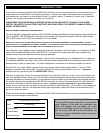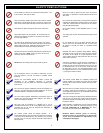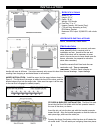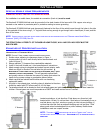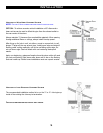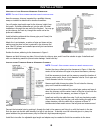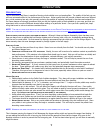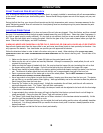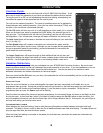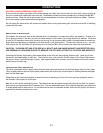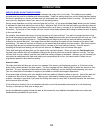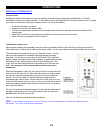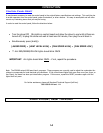
OPERATION
7
OPERATION
Proper Fuel
The SP 6000 Multi-Fuel Stove is capable of burning whole shelled corn and wood pellets. The quality of the fuel you use
will have a dramatic effect in the performance of the stove. Higher quality fuels will provide a cleaner and more efficient
burn, while producing less ash, and generally reducing the amount of creosote developed in the stove and exhaust flue.
For these reasons we strongly recommend that you use the highest quality of fuels available in your area, and that you
experiment with a couple of different brands before settling on a particular brand. Once you find a quality fuel, keep
using that brand or source to achieve consistent burns.
NOTE: T
HE USE OF OTHER THAN WOOD PELLETS CONFORMING TO THE PELLET FUELS INSTITUTE STANDARDS OR WHOLE SHELLED
CORN IS NOT APPROVED AND MAY RESULT IN THE UNSAFE OPERATION OF THE STOVE AND
WILL VOID THE WARRANTY.
A
LWAYS CHECK YOUR FUEL SUPPLY FOR FOREIGN OBJECTS. Although it does not happen frequently, there has been more
than one bag of corn or pellets that had foreign objects such as screws, bolts, nuts, etc., accidentally packaged along
with the corn or wood pellet. For that reason we strongly recommend that you check your fuel for foreign objects. The
stove warranty does not cover damages caused by foreign objects in the fuel supply.
Shelled Corn
Corn must be clean and free of any debris. Never burn corn directly from the field. You should use only clean
and filtered bagged corn.
C
ORN MUST HAVE LESS THAN 12% MOISTURE. Ideally, the corn will be as low of a moisture content as possible for
best performance. 12% moisture is the highest that should ever be used. Wet corn will not burn as reliably and
can lead to the deterioration of stove components, reduced efficiency, and void all warranties.
Store the corn in a dry place and keep the bags or containers sealed. This will help to prevent the corn from
absorbing excess moisture.
We strongly recommend that you purchase a moisture tester and periodically check the moisture content.
N
EVER USE “DEER CORN”. It is very common for this type of corn to contain molasses or other sugars to attract
the deer. These additives will create a very dirty burn and potentially degrade stove components.
N
EVER USE “SEED CORN”. It is treated with chemical pesticides that can be harmful or even fatal if swallowed.
Therefore, this type of corn is dangerous to have in the house, especially where children or pets can reach it.
N
EVER USE CORN WITH HIGH WAX CONTENT.
Wood Pellets
Pellets should conform to the Pellet Fuels Institute standards. This, along with proper installation and damper
control, will help to ensure that you achieve the most efficient and clean burn possible.
Pellets should be between ¼” or
5
/
16
” in diameter, and no longer than 1”. Longer or thicker pellets may result in
improper feed and possibly even result in an auger jam.
Pellets can vary in ash content. This will affect how cleanly and efficiently the stove will burn. Poor quality
pellets will often create smoke and dirty glass. They will create a need for more frequent maintenance. You will
have to empty the burn pot plus vacuum the entire system more often. Poor quality pellets could damage the
auger. Y
OU SHOULD ONLY USE PELLETS WITH LESS THAN 3% ASH CONTENT.
Avoid pellets with excess fines. “Fines” is a term describing crushed pellets or loose material that looks like
sawdust or sand. Pellets can and should be screened before being placed in hopper to remove most fines.
The hopper should be emptied and vacuumed on a regular basis to prevent a buildup of fines in the system.
N
EVER USE WET PELLETS. Wet or very moist pellets will produce an extremely dirty and inefficient burn. Store
your pellets in a dry place and keep the bags or containers sealed. This will help to prevent the pellets from
absorbing excess moisture.
NOTE:
WHENEVER YOU OPEN THE HOPPER LID THE AUGER WILL STOP FEEDING FUEL TO THE FIRE.
This is because opening the hopper lid will disengage the hopper safety switch and prevent the auger from feeding. If
you are adding fuel while the fire is burning, be sure to limit the amount of time that the hopper lid is open to the
absolute minimum in order to prevent the fire from going out. If the fire does indeed go out, you will have to manually
relight the stove.



